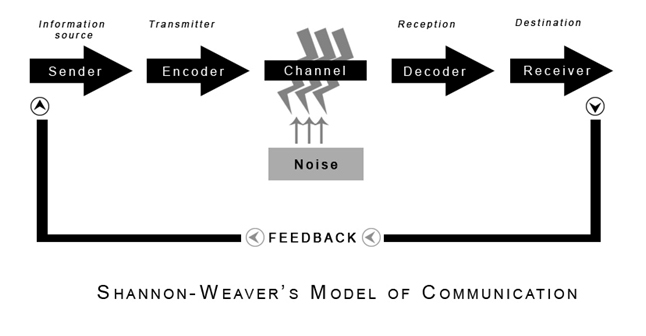
No brief? Ouch!
Diving into a mandate without an objective? Never! Investing in a project without any KPI? Oh, no!
So why do we allow ourselves to carry out mandates without ever confirming whether expectations are the same for everyone?
Certainly if we had the privilege of telepathy with our clients, we would certainly be on the same page. And again! For me, a briefing exists to rewrite the information received in order to validate our understanding. It allows you to walk hand in hand with the client and it helps to row at the same pace.

In Shannon and Weaver’s communication model, there is the encoding step, which defines the shape given by the transmitter to the idea to be transmitted and the decoding step, which is the interpretation by the receiver of the received signals.
It is the word “interpretation” that is important here. That’s what the briefing’s for. To explain to our client our interpretation of his expressed need and then inspire and guide the creative teams.
Initially, it was only used to brief the creation, but for several years, I have used it to validate the direction of a project before even making my colleagues work.
So why avoid it? Lack of time, information or resources? I dare believe that the time invested for the briefing will save us time.
Better understanding of the mandate = better strategy to achieve goals
No?
In addition, the briefing serves to protect oneself. “That’s not what was said.” “I don’t remember insisting on that.” “You misunderstood.” A briefing is written and signed by both sides. So it can avoid confusion.
What do we include in the briefing?
I propose a model for communication mandates, modelled on Anne-Marie Leclair’s, who taught me during the DESS in marketing communication. It’s a happy mixture of qualitative (or emotional) and quantitative (relational facts) information.
Above all, it’s short. Keep in mind that information you find interesting is not always relevant to your story.
So here’s the recipe:
1. The key phrase (what are we selling?)
It contains a functional description of the product or service, including what it offers that is unique, its most interesting aspects and the brand’s personality traits.
2. The problem to be solved (what do we want to accomplish?)
You want to increase awareness, sales or understanding? To change your brand image by rejuvenating, democratizing and maturing it?
3. The goal
If I write it in the singular, it’s because it’s better to have only one. Otherwise, it’s easy to spread yourself. I am talking here about the communication objective, which will serve to achieve the marketing objectives set by the client. As I say too often, you can’t pass several messages to several targets at the same time. Nobody wins when they want to attack all fronts.
4. The target audience
It’s good to distinguish current consumers and desired target, but focus on the audience you want to appeal to. Who are you trying to connect with? This is the time to define the audience to be addressed (age, gender, education, socio-economic status and other socio-demographic information). And what does this group think of the product or service category? Finally, what does your target think of the world in general (in relation to the mandate, of course)?
5. The profit, the promise, the offer
Basically, you have to find the one and only message you want to communicate. What do you really want to say to your target audience, concisely, precisely?
6. The facts supporting the offer
How can we justify our previously mentioned promise? Here we refer to concrete and reliable facts justifying the right to position the brand in such a way.
7. The angle, the desired tone
How to reach the target? We must seek to link the brand with a visceral need of this target. Will we educate them, inspire them, amuse them, provoke them? And will the target audience change their behaviour? Will they feel sexier, heroic, intelligent, etc?
8. The competitors
With whom is your product/service in direct and indirect competition?
9. The constraints
List what must be respected. For example, graphic standards, legal aspects, issues, deadlines, etc.
10. The approvals
Signature of both sides (agency and client).
Finally, your briefing will be accompanied by a list of deliverables, a schedule and a budget, but we’ll talk about it later on. 😉

